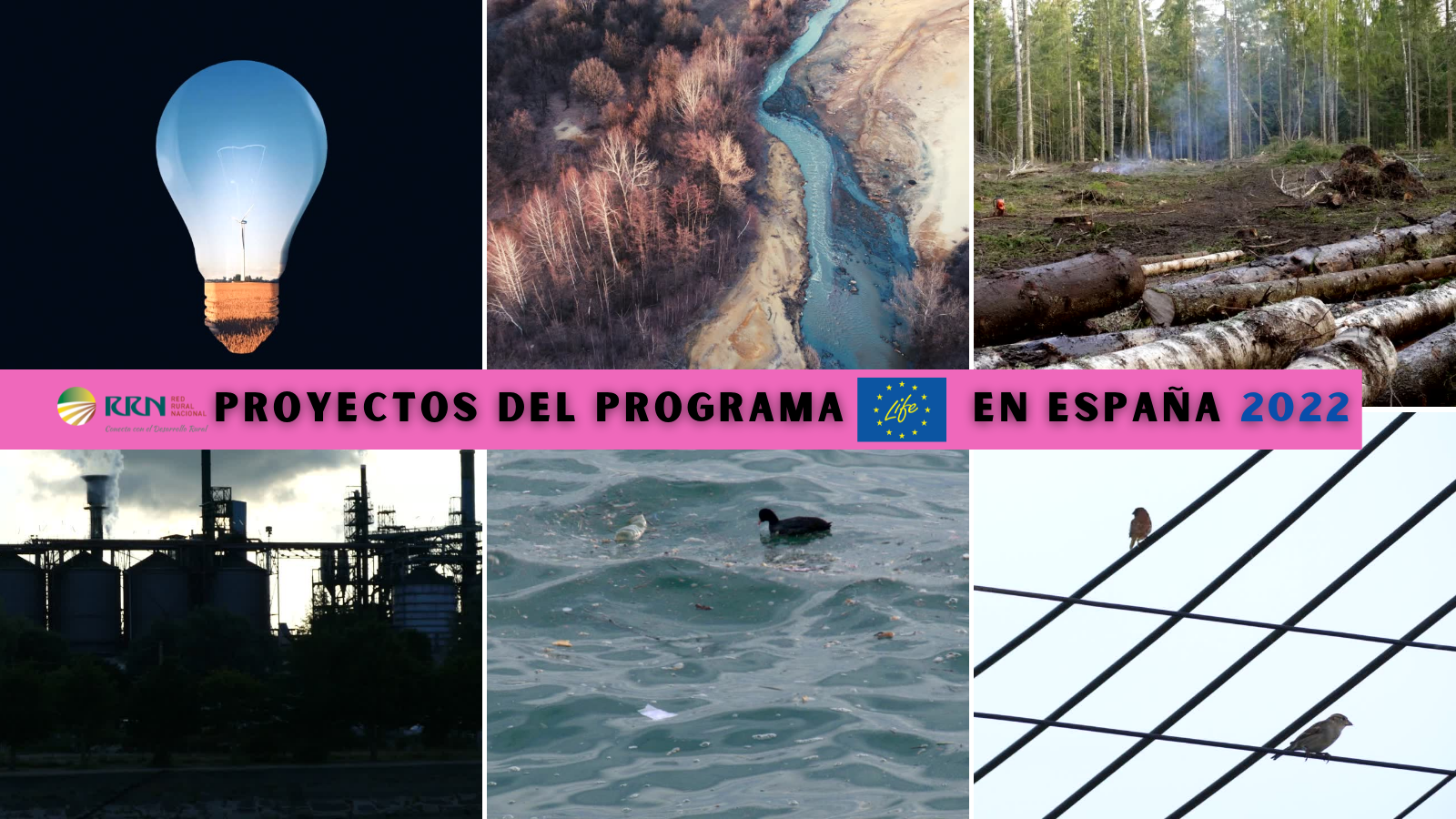
30 de November de 2022
The LIFE Programme – which turned 30 in 2022 – is the European Union's funding instrument for green projects that benefit the climate and the environment.
- The LIFE Programme – which turned 30 in 2022 – is the European Union's funding instrument for green projects that benefit the climate and the environment.
- In this new 2022 edition, Spain will receive 47 million euros for 25 new projects.
The European Commission (EC) has just approved – through the LIFE program – more than 380 million euros in funding for 168 new projects across Europe, of which 47 million euros are for 25 Spanish projects .
Projects from almost all European Union (EU) countries will benefit from the LIFE Programme based on four themes:
- Nature and biodiversity
- Circular economy and quality of life
- Mitigation and adaptation to climate change
- Transition to cleaner energy
The LIFE Programme is the EU's funding instrument for the environment and climate action, established in 1992. In its 30 years of existence, it has co-financed more than 5,500 projects across Europe. For the 2021-2027 period, the European Commission has increased LIFE Programme funding by almost 60%, reaching €5.4 billion.
Spanish projects
LIFE Programme projects are designed to help the EU achieve climate neutrality by 2050. In Spain's specific case, the 25 approved projects are:
A) In the area of “Nature and Biodiversity” :
- Improving river habitats and species in the Cantabrian Sea(LIFE KANTAURIBAI) : the project aims to improve the conservation status of species and habitats in 15 Natura 2000 sites in Spain and France.
B) Environment and resource efficiency:
- An eco-efficient system for the treatment and reuse of wastewater(BIODAPH2O) : for the use of wastewater in agriculture, which avoids the discharge of pollutants.
- Promote reward-for-use recycling schemes(CENTS4PACK) : will design reward schemes for citizens to separate waste to meet recycling targets.
- Recovery of polyphenols from olive oil waste(CYCLOPS) : for conversion into valuable products for oil and wine, pharmaceuticals and cosmetics.
- A closed-loop system for reusing water from textile finishing(LIFE ANHYDRO) : This project will develop a water regeneration and reuse solution in textile processes that is expected to reduce water consumption by 92% and wastewater generation by 98%.
- Preventing Evaporation Losses in Agricultural Reservoirs(LIFE H2OLOCK) : The project suppresses algae growth in reservoirs without using algaecides and produces renewable energy for irrigation systems.
- A circular seawater desalination process that produces renewable energy(LIFE INDESAL) : The project will develop a seawater desalination process to produce desalinated water.
- A biorefinery to produce high-value products from fishery discards and by-products(LIFE REFISH) : This project will create a biorefinery to convert fishery discards into value-added products.
- Reuse of end-of-life electric vehicle batteries in hybrid renewable energy plants (LIFE ReLiGHT ): its The objective is the reuse of end-of-life lithium-ion batteries in electric vehicles on a large scale.
- Using Technology to Optimize Agricultural Processes(LIFE Als) : to improve crop knowledge and adjust management practices and agricultural machinery to achieve savings in the use of pesticides, fertilizers, water, and diesel.
- Removing Contaminants of Emerging Concern from Water(PRISTINE) : The project aims to demonstrate that more than 80% of contaminants can be removed from wastewater and drinking water at a cost 30% lower than current technologies.
- Development of a water recovery train for crop irrigation(WARRIOR) : a project for irrigation and water stress management.
- Reuse of a toxic waste stream from the paper and pulp industry(ZEBRA LIFE) : This project will allow paper mills to reuse their waste as a natural antioxidant.
C) Adaptation to climate change
- Climate-Resilient Agroforestry in Northwest Iberia(LIFE SILFORE) : The plan is to develop silvopastoral systems, a method that combines forestry and livestock grazing, to reduce the risk of fires.
- Precision soil monitoring for water savings on farms(HYDROSTICK) : allows soil monitoring to save water and fertilizers.
D) Climate change mitigation
- Certification of sustainable cereal production(LIFE Innocereal EU) : for the production of cereals with low carbon emissions.
- Biofuel to replace the burning of rice straw(LIFE REPTES) : The project will develop a new circular model to recover rice straw and sewage sludge to produce renewable gas biofuels.
- Climate mitigation through land management in mining areas(LIFE CARBON2MINE) : to optimize the carbon sink effect in mining areas in Asturias.
- Promoting sustainable forestry(LIFE TOKEN CO2) : to calculate the absorption of carbon dioxide by forests.
- Climate governance and information “Adapting beaches to climate change”(LIFE AdaptCalaMillor) : to adapt urban beaches to climate change (sea level rise, etc.).
E) Clean energy transition
- Construction Skills in the Spanish Construction Sector(Construye 2030) : a project that will accelerate the cost-effective renovation of existing buildings and promote the use of smart technologies in buildings.
- Developing technical assistance to boost energy communities across Europe(LIFE BECKON) : The project aims to foster the creation of “energy communities” across Europe by developing support mechanisms for public authorities, developers, and Local Action Groups.
- Supporting the Energy Transition in Tourist Islands(GENERA) : to assist public authorities on tourist islands in the transition to a decarbonized and sustainable economy.
- Bringing Local Actors Together for Regional Energy Communities(JALON) : To stimulate community-based energy projects led by European citizens, especially in rural regions . This will be demonstrated through a large-scale regional energy community bringing together 87 rural villages in Spain. This will involve 5,000 citizens, 40 local authorities, and 75 businesses and aims to mobilize €13 million to invest in photovoltaic energy installations. Promoting the project's results should help foster replication across the EU.
- Supporting the sustainability of European energy communities(COMANAGE) : for the creation of a governance framework for energy communities.











